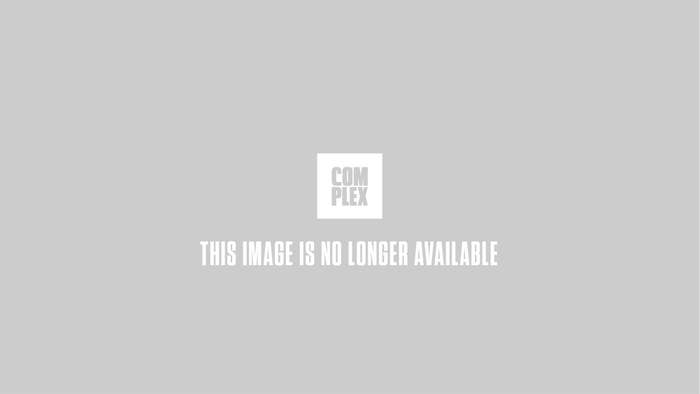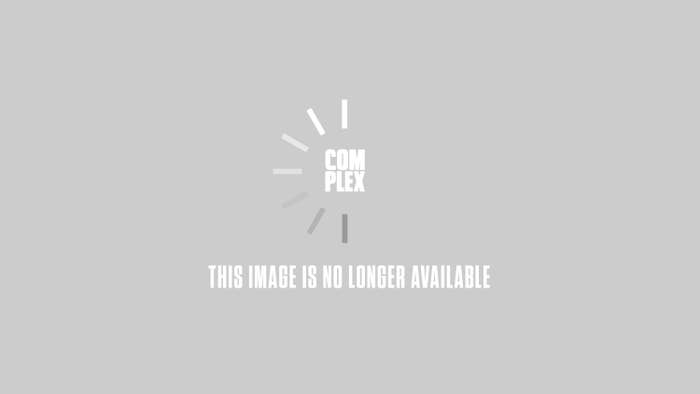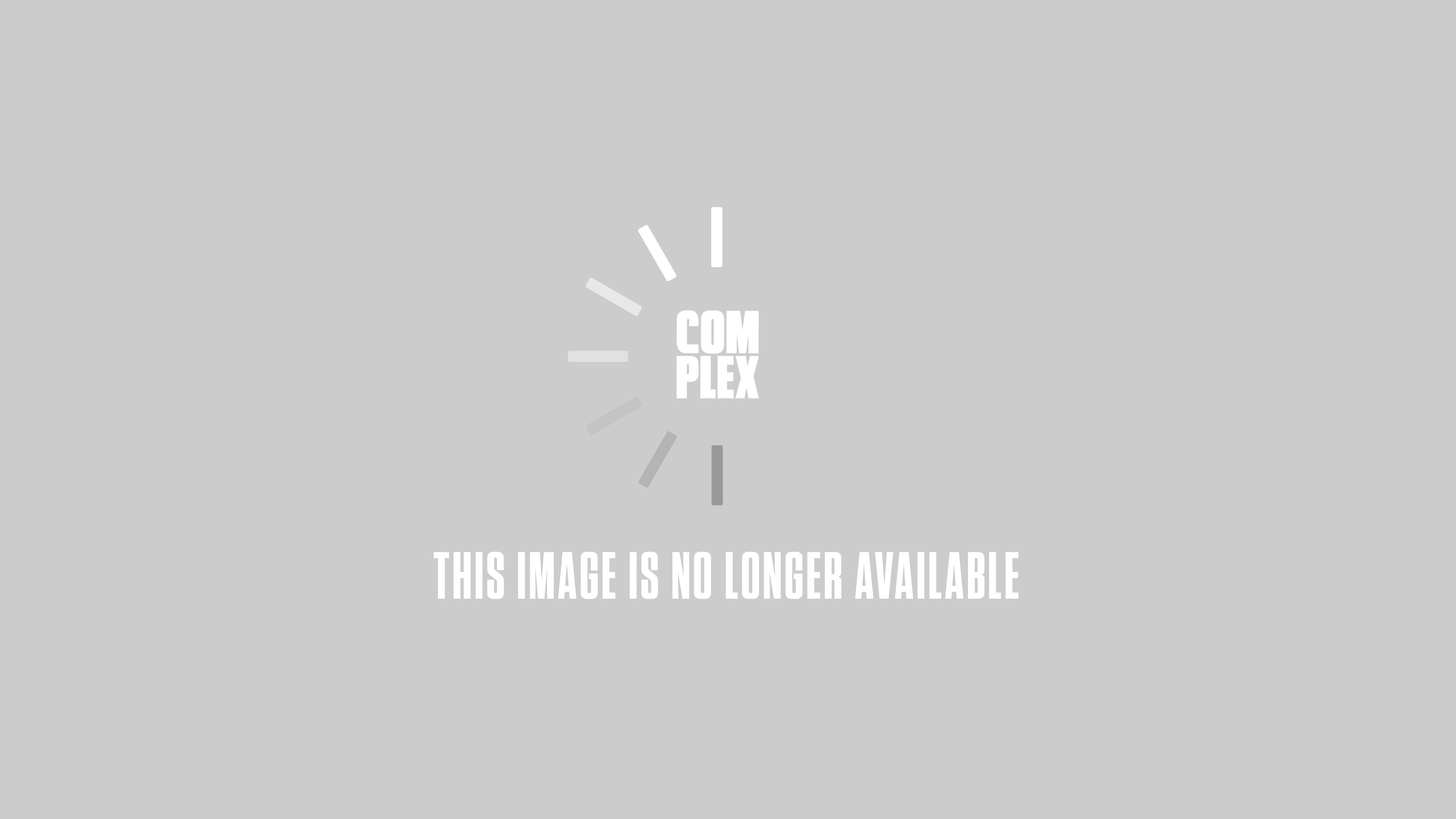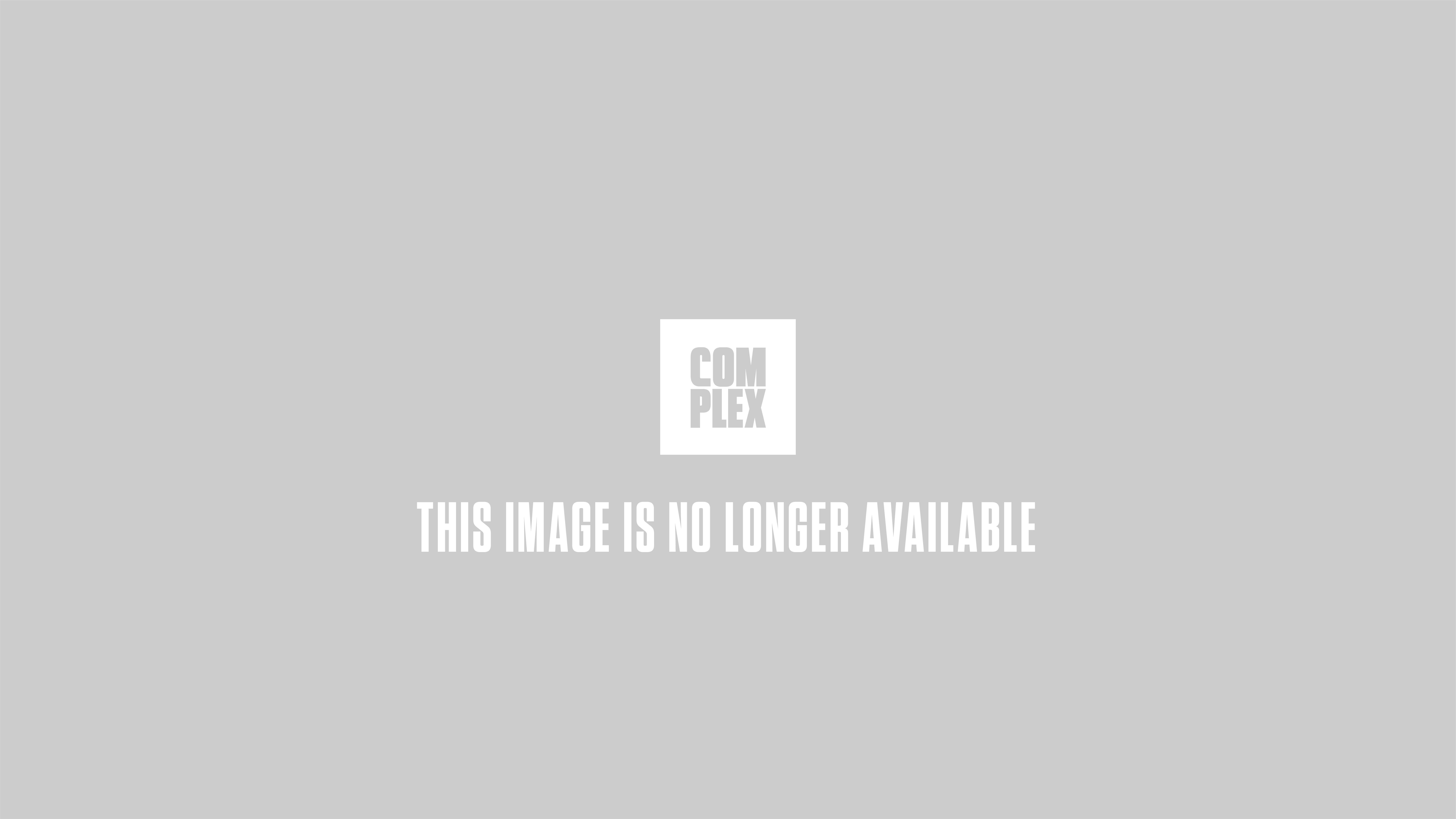
Stampd is one of those rare labels that prefers to let its product do all the talking. But when a brand has a track record that is consistently nothing but bangers that resonate not only with streetwear fans, but also with fashion heads at the same time, you definitely start to wonder about the mind(s) and creative process behind the whole thing. So, between collaborating with some of most serious names out there, opening up a new office and workspace in downtown L.A., and planning Stampd's extension beyond its current stronghold in the market, Chris Stamp somehow found the time to tell us the full story of how his passion for creation took him from working in a restaurant to designing one of the most coveted labels out there.
Photos by Adri Law.
Have you ever really told your story in full detail?
No.
I've read bits and pieces but I think now is a great time with all of your projects and success to tell people how it started.
I haven't told the full story, because I don't want to come across the wrong way.
I don’t think thats possible, because your story is one that everybody—whether you like men’s wear, whether you like street wear, whether you’re a fashion head—there’s something in your story and there’s something in your collection that they can understand and they have to respect because of where you came from. How did you start with just hats?
I started in college. I started off with graphic design in community college, soon figuring out I didn’t want to stay solidified to just design because art had always been a part of my life, and I wanted to push myself out of my comfort zone. My mom was a handbag designer and early on owned a luggage company in Aspen with my Dad. I grew up in a small business atmosphere.

You grew up in L.A.?
I was born in Aspen, Colorado and we moved to North County San Diego (Encinitas) when I was five, and I grew up between there and Cardiff By The Sea through high school. After I graduated high school I went to college at Cal Poly, in San Luis Obispo. I started my degree in graphic design. I did that for two and a half years, essentially taking a minor in graphic design. It was at that point, that I felt pigeonholed; I didn’t want to be locked into a career where I was designing menus and logos my entire life. But I always knew my passion would take me back to design, so I challenged myself. I transferred into the business program at Cal Poly and I did an emphasis in entrepreneurship. The last six months of my senior year, I wrote the business plan for Stampd, for what it was at that time, a custom shoe company. I would actually hand paint Chuck Taylors, one by one.
You don’t come from a particularly wealthy family.
Not particularly, no, but I always had the support of my parents in whatever direction I wanted to take myself. During school I maxed out how many unsubsidized loans I could use during school, and invested into stock for the last two years of college. When I graduated I'd saved enough money to make the move to L.A., and started my business.
I essentially worked at a restaurant for the first year, while starting my business (painting shoes out of my apartment), and shortly after being approached by my at that time partner. He wanted to actually make footwear so we started making footwear. He and I made Stampd a footwear company initially, soon after creating another line called Study Footwear. We worked together for about three years.

I remember early Stampd; you had the floral sneakers and the numbers.
Yes, the numbers and the floral joints were sick, we also had a take on the Nike Jordan V that first season too.
When did the business turn for you? And what did it change?
I ended up splitting ways with my partner at the time. We were just on two different waves. It just wasn’t meant to be, so I restructured what I was doing. I started a production company simultaneously as I was exiting that partnership, which allowed me access to shoot campaigns between LA and New York. I was able to land two or three big fashion clients and I did a full year of ad campaigns for them. I saved every dime and put it towards Stampd. At that time, Stampd was still running on the side, I'd update the blog here and there and release products just out of the necessity of wanting to make cool stuff. That’s when I first started making hats and we did limited edition releases of select headwear and apparel pieces. It was at that time my passion project; it was still on the side.
As things grew with my production company, all of the money was taken and in-turn invested right back into product for Stampd, until I was able to sustain myself financially without the production company income. That was about three years ago and everything that we've been making since, has been put right back into the business and it just kind of evolved into where we are now.
Do you have a full staff? How many people? As I look around the room, everyone is quiet, and everyone is working.
I have ten employees, outside of that a collection of creatives, whether it’s photographers, stylists and really just friends. I like to be surrounded by people who like to do creative things, and really understand our aesthetic and what we’re trying to do. I'm pretty lucky in the sense that I get to work with some of my best friends on a daily basis.

So fast forward to this year. How long has it been since you’ve actually been doing the tees? Like the jersey tees, the mesh baseball jerseys, the elongated tees, which is where the market is right now?
A friend of mine and I just started creating things we wanted to wear... I started with just designing accessories, and then I approached him because he came from more of a technical apparel background and I essentially just said, “Why don't we start just doing very select apparel pieces.” So he came on as an apparel designer for us and we started doing clothing outside of just T-shirts. We really wanted to be a contemporary, ready-to-wear collection outside of what we came from: accessories.
A lot of times designers—maybe it’s more of a women’s wear thing—but I just find that a lot of designers design with these creative aspects in mind and sometimes it’s not about wearability and it’s not about selling. It’s about this abstract idea or this concept that is so far-fetched. Your clothes are what guys now really want to wear. Do you wear it?
I honestly wear everything we make just out of the necessity of it not otherwise existing. Literally, us just being fans of fashion and clothes and style and wanting to create things that are easy for our customer and ourselves to wear and feel comfortable in, really.
That’s really important. I think that’s the most important thing about the things that you make because you co-sign it and now you’re your own brand. You Chris Stampd the person, people want to live your lifestyle. People want to look like you and dress like you. Is that weird?
[Laughs] I don’t know if that’s true.
How do you not know that’s true? You have so many people following you on social media.
Yeah, I just think that’s just more of an aesthetic thing. Maybe they like the photos that we post or what we’re about. I don’t know if it’s necessarily me entirely, but whatever.
But it’s a lot more than just your clothes. It's lifestyle, it’s about you as a person.
I think it’s about being real. I think it’s about being honest with who you really are and authentic. Not trying to fake whatever. Just be you, and let that be true. Let people appreciate that your point of view.. People can feel out honesty.

One hundred percent. Back to the clothes, your color palette is very specific; it’s black and white.
I started with the basics. I predominantly wear all-black. It’s just again, came from what I like to wear. I’m not going to make anything that me or my group of friends wouldn't wear. Part of the key to our success has been, looking at the history of how well our products have done over the last three years, every product that was a big seller, are the same things I personally wear the most. I'm luckily surrounded by a group of good people that are stylish and kind of get it in the sense that they give us really good feedback.
That brings up another point that I was just having a conversation with someone the other day. It’s interesting how for such a long time, nobody was really interested in L.A. as far as fashion or focusing on any designers. Especially in menswear. People are really starting to notice what is happening in L.A. And now it's these guys from the West Coast—and I say you guys meaning you, the guys from En Noir, and John Elliott—you guys are the top three contenders.
I mean those are all my boys and I think we all do something different in the market that’s very important for sure. I think one of my main emphases from the beginning is creating a solid business foundation. It’s not about the hype and or who gets the most press. I want what we have to grow organically just out of making good, cool product. If you make something that is high quality at a good price, you start to develop a returning customer, and you start to sustain a business that wasn't built on the foundation of hype, it’s driven directly based on product. And making things that aren’t in the market has kind of been the key to success in the beginning. It hasn’t been my focus to stunt. I just am me. I just want to make cool shit.

That’s dope. Then fast forward to this fall. This new collection that’s coming out—and i've been paying attention since the beginning—it is a fully thought out collection.
This is our best-curated collection to date for sure. It encompasses everything from footwear to the whole gamut of cut and sew apparel, jackets, pants, button-ups, our full line of essential T-shirts, graphic T-shirts, I could go on. And then getting into our headwear, from a hundred different snapbacks, to five panels, bucket hats, beanies. What's really going on to the next level is the art pieces that we’re making too. We're even doing things specific to our design office space, the gold dice, oversized tie-dyed bean bags, etc.
Lifestyle things.
Exactly.
And now you’re going to do something with the surf category?
The surf thing came about because in high school I was a surfer. I grew up in that atmosphere. I grew up by the beach. Surfing has always been a part of my life and growing up, and I always wanted to, when I got the chance, to bring surfing full circle, including it in my business life as well. We’re doing a small capsule collection that will be releasing in Montauk, New York this summer at the Surf Lodge.
That, along with our surfboards, we’re going to be doing a small surf demo and release the collection for the first time, essentially seeing where it leads us, I guess.

What do you think will be the evolution of this? What do you think is next? It’s interesting to see you going back and doing shoes now since that’s where you started.
Footwear has always been a passion from the beginning. When I entered into the market with footwear, I had no idea I was starting with the most difficult thing first. I’m actually sourcing some stuff in Italy. So I’m going to revisit doing leather bottom shoes, a couple different sneaker silhouettes, all for spring 2015 all done in Italy.
It’s difficult.
And I realized that and told myself I’m not going to get back into this, until I have more of an established brand and more of an understanding of how to run a footwear company. I want make a good shoe at a fair price, with the best quality.

What's been a challenge for you?
I think the biggest thing is that, I think a lot of people that want to get to this point (nor do I even feel like I’m even at a point yet) but this is the first time where I have this big office, a lot of my boys on staff, it's become more than just me, a lot more. It's really caring about the good of our entire team now. It’s a serious thing, and I’m the worst at taking a step back and appreciating it. I’m so ambitious to the point where every step or everything we get, it’s never enough. It becomes a challenge to relax.


